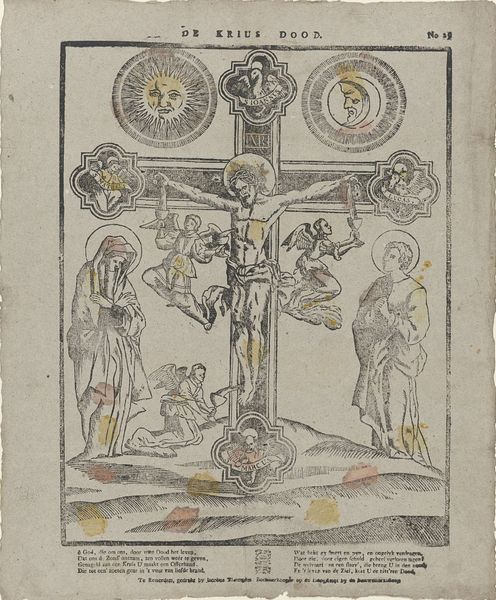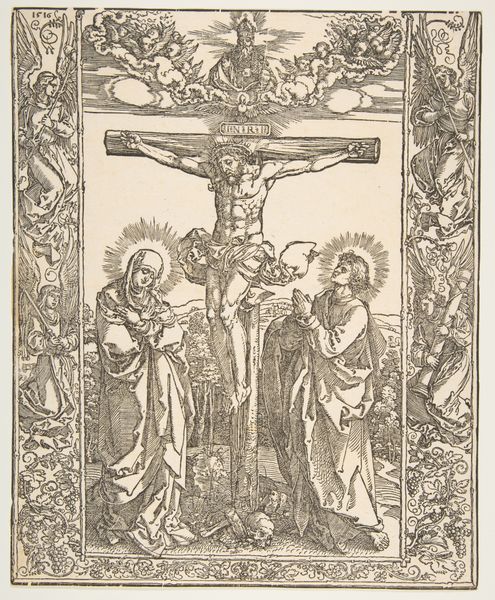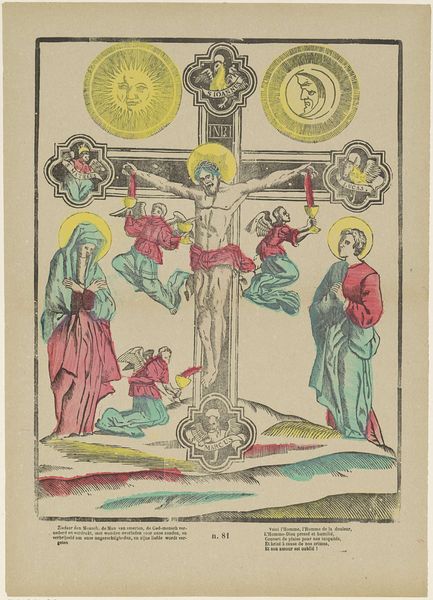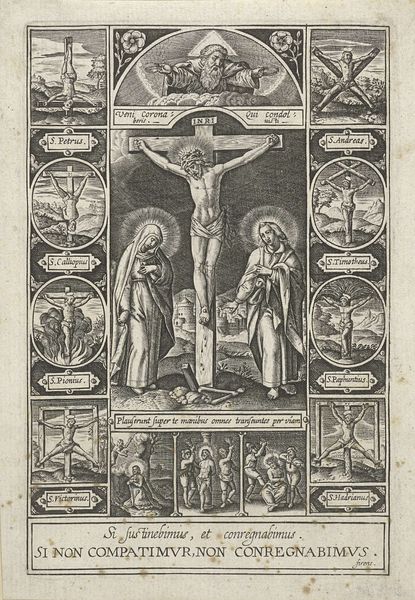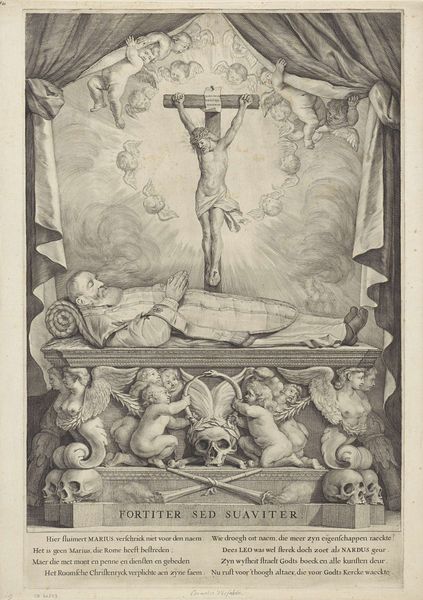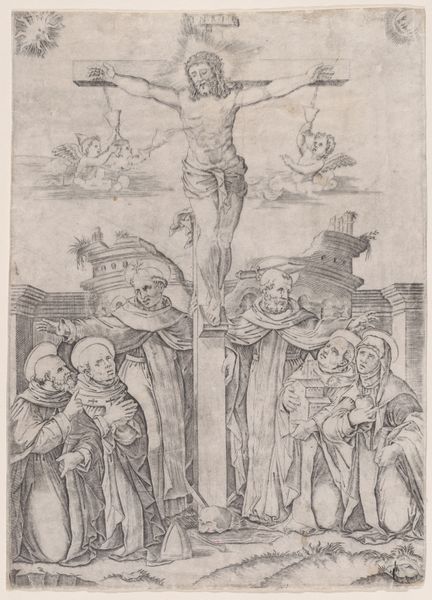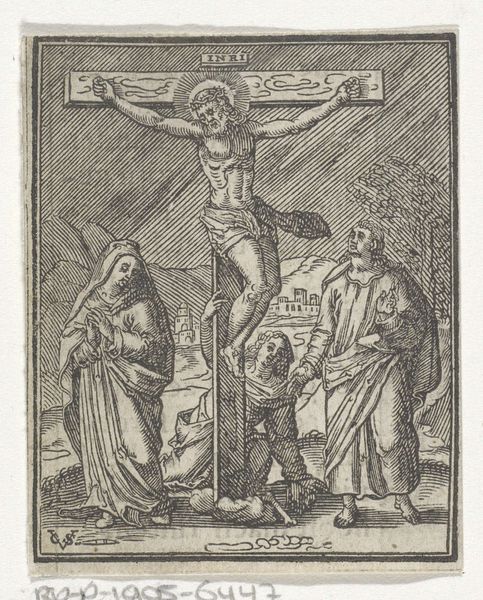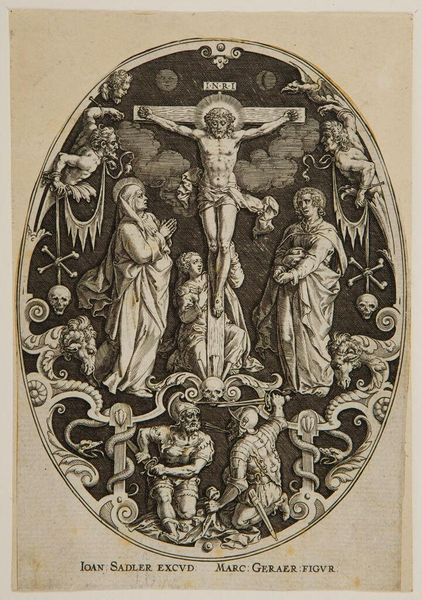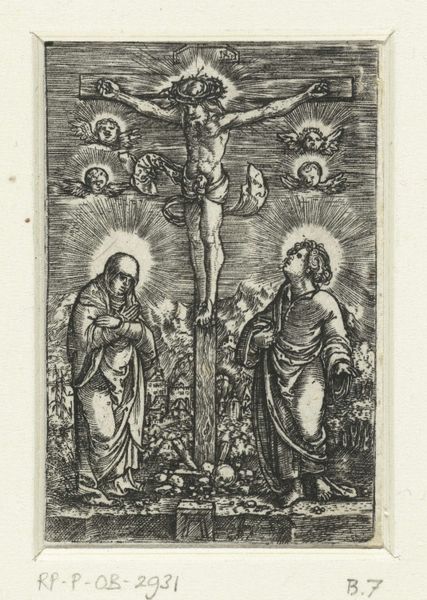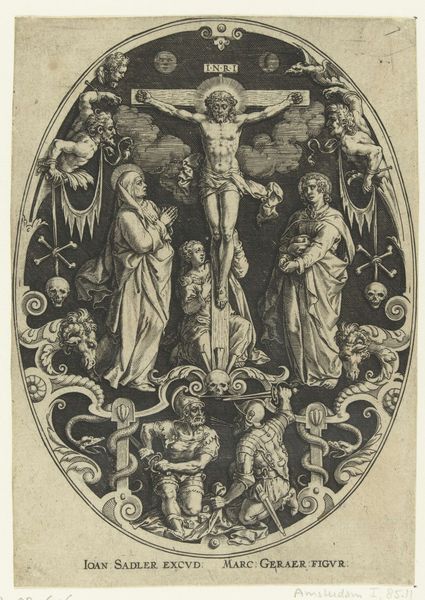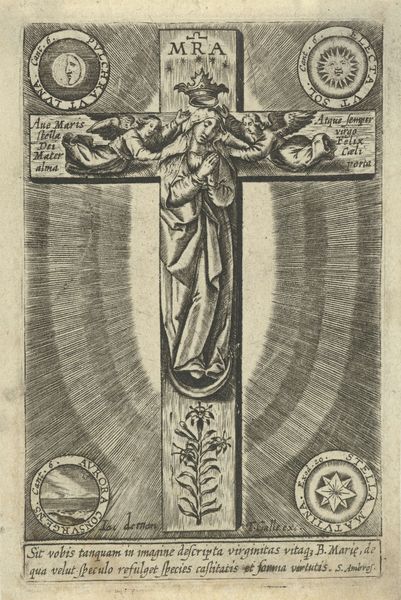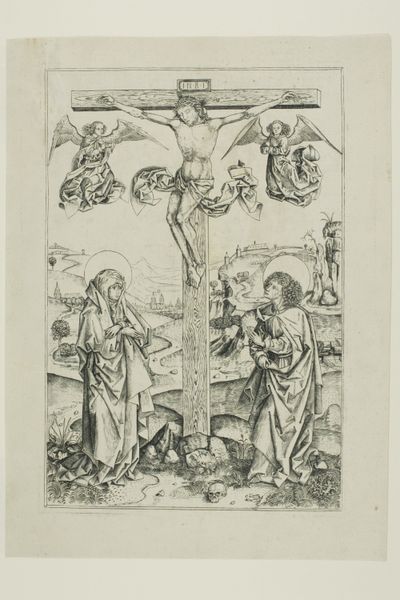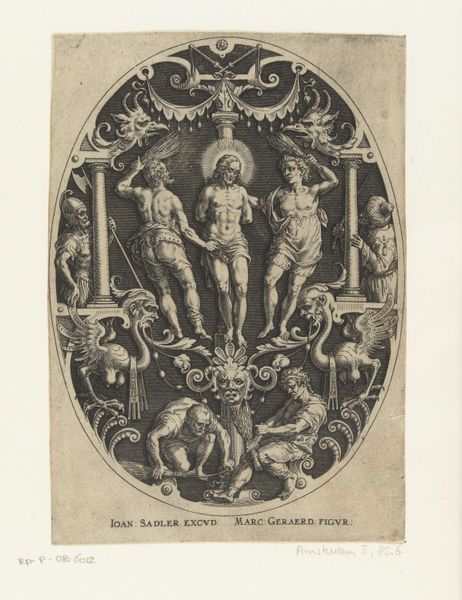
drawing, print, ink, engraving
#
drawing
#
toned paper
#
medieval
# print
#
pen sketch
#
sketch book
#
personal sketchbook
#
ink
#
ink drawing experimentation
#
pen-ink sketch
#
pen work
#
sketchbook drawing
#
history-painting
#
storyboard and sketchbook work
#
sketchbook art
#
engraving
Dimensions: height 399 mm, width 323 mm
Copyright: Rijks Museum: Open Domain
Curator: Let’s examine "De kruis dood," or "The Death of the Cross," an engraving made by Jacobus Thompson, around 1791-1812. It's part of the Rijksmuseum's collection. Editor: My initial impression is of a deeply sorrowful and stark image. The high contrast between the ink and the toned paper emphasizes the suffering depicted. There is something really intense about this image... a little gothic, almost. Curator: Indeed. Consider the period it was created. The late 18th and early 19th centuries were rife with social upheaval. The French Revolution cast a long shadow, and religious art, like this, became a tool to reinforce established societal values. Editor: And to emphasize the power structures inherent in religious institutions. Look at the idealized depictions of the figures surrounding Christ – the virgin, angels... It reinforces the traditional narratives, doesn’t it? Are there any details suggesting this was meant to inspire political action or just faith? Curator: The inclusion of the sun and the moon might hint at a cosmic disruption—reflecting earthly tumult. Thompson, who was also a bookseller, was likely catering to a specific audience that sought both religious solace and political stability during turbulent times. Also, consider how the printmaking process itself made this image easily reproducible, allowing for wider dissemination. Editor: Which made it an ideal medium to spread ideology! So, not only do you have the religious narrative itself reinforcing certain societal structures, but also this ease of reproduction allowed those ideas to spread far beyond those immediately surrounding him. The faces almost appear disembodied from the suffering of Christ, they exist only to offer reverence. I do think you see that tension here: this balance between devotion and the assertion of power. Curator: It serves as a fascinating intersection of personal belief and social conditioning through public dissemination. Editor: Absolutely. Reflecting on "De kruis dood," it really highlights the power of visual culture. We are presented with an emotionally charged moment within very complicated, politically charged conditions. Curator: It’s remarkable how a single print can illuminate the complex interplay between art, religion, and society. A powerful statement to take away today.
Comments
No comments
Be the first to comment and join the conversation on the ultimate creative platform.

